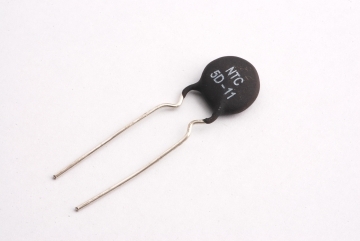News
- 2010-09-08 17:18:33
-

NTC Thermistor Applications
NTC thermistors are used as resistance thermometers in low-temperature measurements of the order of 10 K.
NTC thermistors can be used as inrush-current limiting devices in power supply circuits. They present a higher resistance initially which prevents large currents from flowing at turn-on, and then heat up and become much lower resistance to allow higher current flow during normal operation. These thermistors are usually much larger than measuring type thermistors, and are purposely designed for this application.
NTC thermistor are regularly used in automotive applications. For example, they monitor things like coolant temperature and/or oil temperature inside the engine and provide data to the ECU and, indirectly, to the dashboard.
NTC thermistors can be also used to monitor the temperature of an incubator.
Thermistors are also commonly used in modern digital thermostats and to monitor the temperature of battery packs while charging.
Thermistors are also used in the hot ends of 3d printers, they produce heat and keep a constant temperature for melting the plastic filament.
NTC Thermistors are used in the Food Handling and Processing industry, especially for food storage systems and food preparation. Maintaining the correct temperature is critical to prevent food borne illness.
NTC Thermistors are used throughout the Consumer Appliance industry for measuring temperature. Toasters, coffee makers, refrigerators, freezers, hair dryers, etc. all rely on thermistors for proper temperature control.
History
The first NTC thermistor was discovered in 1833 by Michael Faraday, who reported on the semiconducting behavior of silver sulfide. Faraday noticed that the resistance of silver sulfide decreased dramatically as temperature increased. Because early thermistors were difficult to produce and applications for the technology were limited, commercial production of thermistors did not begin until the 1930s.
- Previous [Return Home] [Print] [Go Back] Next
Contact Us
Contact Person:
Miss Li MeizhenTel:
86-769-82825339- 82825369
- 18929453899
Fax:
86-769-82829959Email:
nanalee.mc@163.com


